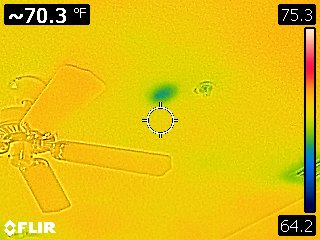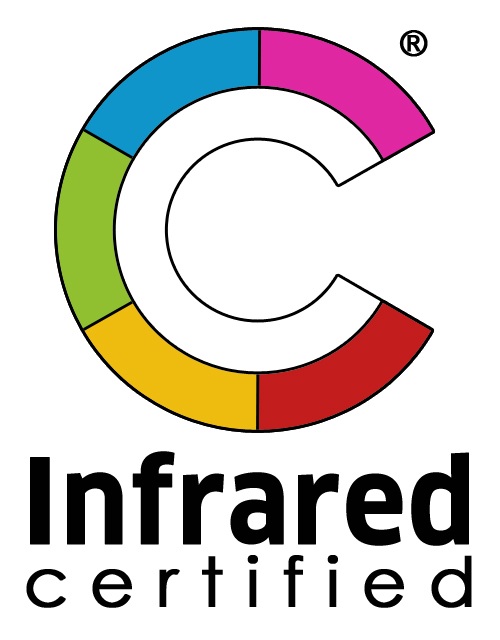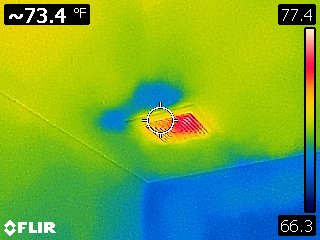


How can thermal imaging protect your investment? Can inspectors see through walls? Not exactly but almost. Infrared (IR) cameras are a very versatile and cutting-edge technology that can help to enhance the understanding of residential or commercial buildings systems and components. Infrared or thermal cameras create an image by detecting differences in surface temperatures and converting those temperatures into colors on a gradient scale, with higher temperatures being lighter and lower temperatures appearing as darker colors. Thermal imaging can be used to help identify several conditions including; air conditioning leaks, missing insulation, over heating electrical components and roof or plumbing leaks. When there is a problem such as a roof or plumbing leak, the moisture will evaporate causing the wet area to be cooler than the surrounding area, and the camera will translate those differences in temperature into a visual image that shows where those differences in temperature are. Some cameras will also overlay the thermal image with a digital image to aid in differentiating where items or surface changes are. With suspected moisture problems, it is always important to confirm or backup thermal imaging findings with a quality moisture meter as there are other factors that must also be considered when performing an infrared inspection. It is a misconception that thermal imaging cameras have x-ray vison and can see through walls, this is only partially true. A thermal camera is limited to surface temperatures, however, things within walls such as hot water pipes can change the surface temperature of a wall enough to be able to “see” the pipe in the wall. Thermal imaging has become a very important part of the inspection process but requires extensive training to understand and use the technology properly. We are trained, Infrared Certified and experienced with using thermal imaging cameras. Contact us today for more information.

Recent Comments